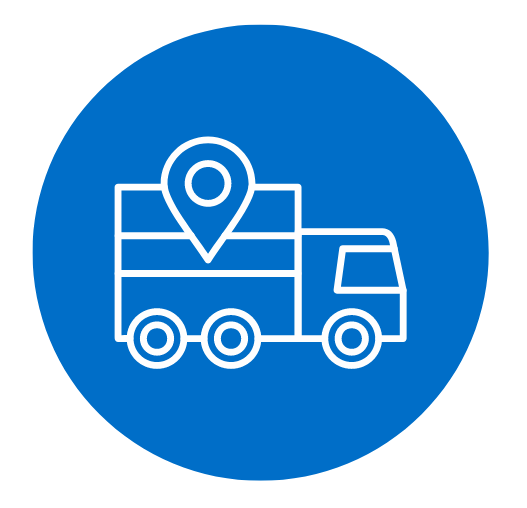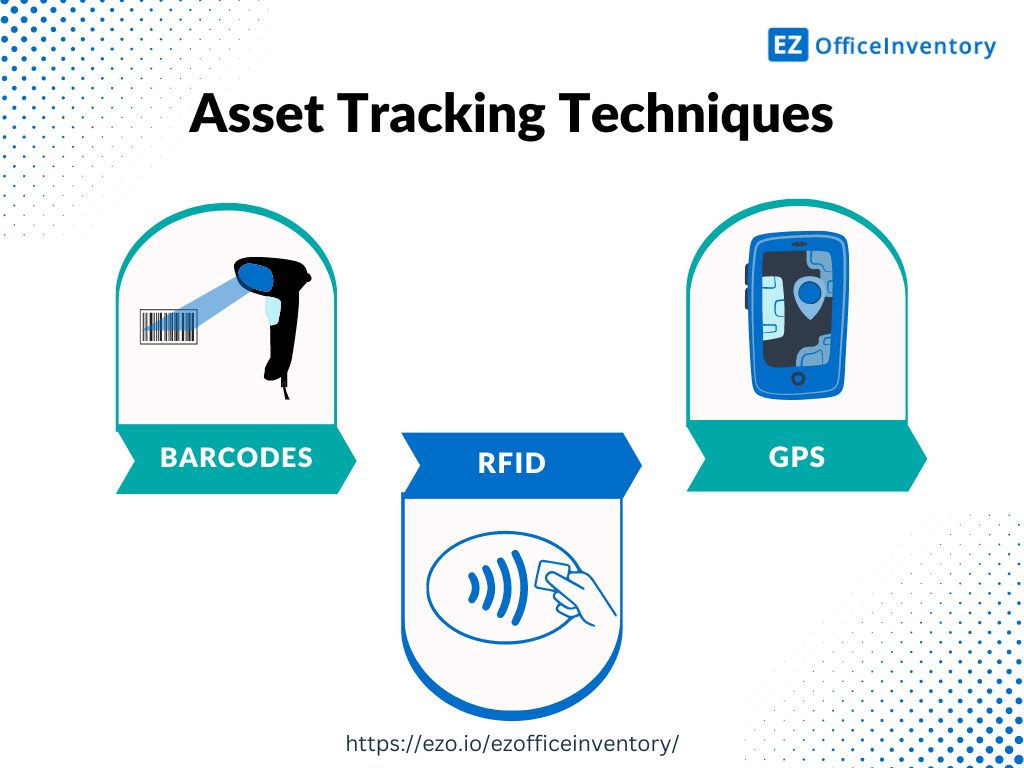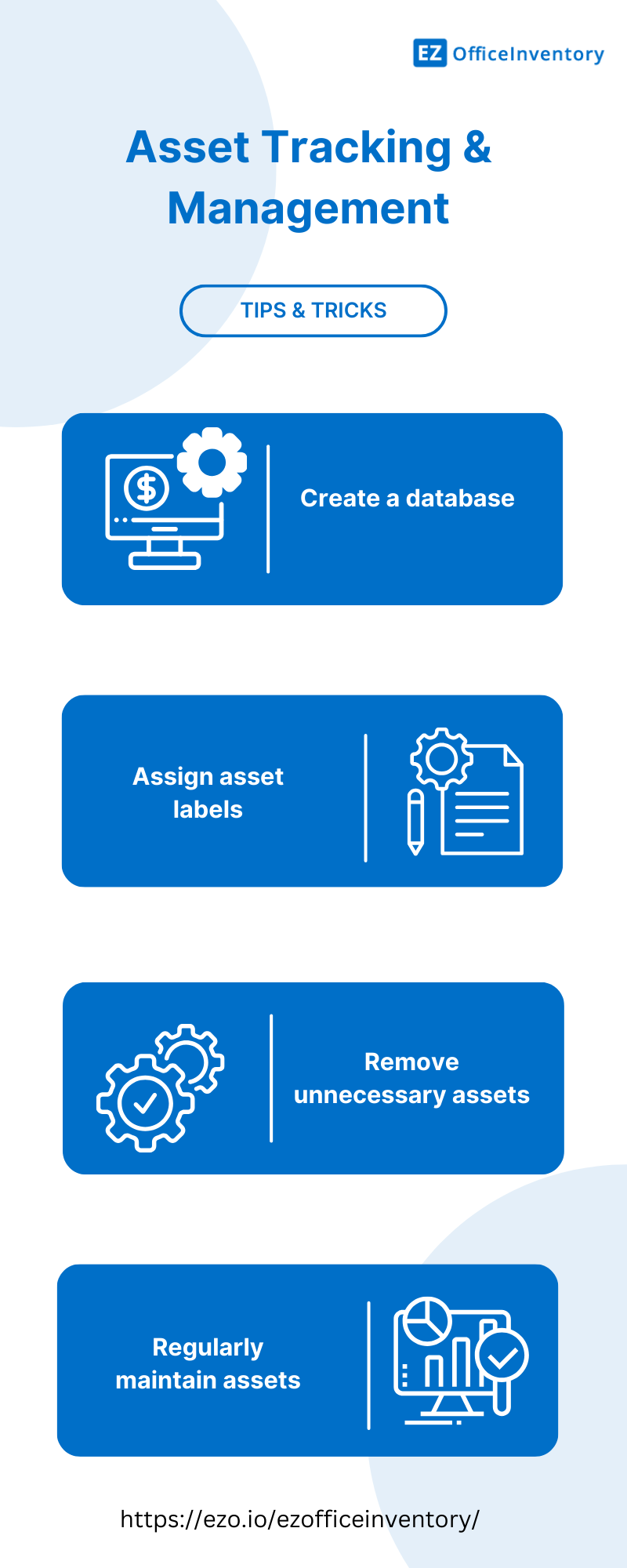Businesses often fear losing track of assets every day. A majority of employees lose critical assets every now and then – mostly due to loss and theft. As per a report, employee theft can cost businesses around $50 billion per year.
But why does it happen? The answer to this is simple: inability to effectively track assets. When you are unable to track valuable assets you can incur huge financial losses. Whether it is a critical piece of equipment such as a truck or a small item like a screwdriver, the loss or theft of these assets can lead to costly replacements.
So, the question arises: how to manage company assets? All kinds of tangible and intangible assets can be managed using an advanced asset tracking system. Such a system allows users to record, manage, and control assets from one place and develop a database that serves as an asset repository.
This article takes you through the nuances of asset tracking and how it helps businesses improve their bottom line.
What is asset tracking?
Asset tracking is a systematic process involving monitoring and management of physical assets. It enables businesses to locate an asset, track its movement, and assess the asset’s status whenever necessary.
Modern asset tracking technology helps businesses automate the asset tracking process and reduce inaccuracies in asset records. Asset management software is an example of such a technology as it empowers businesses to track real-time information about their assets, such as asset location, custodian, and count.
This enables businesses to conduct on-spot checks on assets allowing managers to see where the assets are and who is using them.

Types of asset tracking
There are several ways to ensure effective asset tracking and stay updated on the whereabouts of your assets. All of these ways curb the need for manual data entry and ensure that none of your asset details are missing. Some of these mechanisms are:
1. Barcode labeling
Barcode labeling was introduced in the 1970s and remains the most widely used asset tracking technique to this day. Its popularity stems from the various benefits that barcode tags offer.
They are affordable and automate your asset tracking. You simply need to scan the barcode tag on an asset to conduct various actions. You can even create your own barcode labels and design them as per your business needs.
However, there are some downsides to barcode tagging too.
Barcode tags must be within the visible line of sight of a barcode reader. This means that barcode labeling proves futile for tracking assets in remote locations.
2. RFID tagging
RFID tags are advanced and offer more features as compared to barcode labels. An RFID tag uses radio waves to emit asset data to a reader. It is ideal for tracking assets that are not easily accessible, for instance, a tool that is being used in a coal mining shaft.
RFID tags also enable businesses to scan multiple items at once – expediting the process of data documentation.
But, RFID tags are not suitable for small businesses that are looking to track various, low-value items. Unlike barcodes, they can only be read by only a limited type of scanner.
3. GPS active tracking
Ideal for tracking assets in transit, GPS tags allow firms to actively record the location coordinates of each asset item. GPS active tags send signals to relevant satellites so you can locate your goods wherever they are.
Since they are fairly expensive, it’s not feasible to use them for monitoring asset movements indoors. Logistics companies normally use GPS tags to keep tabs on assets that are always on the move!

How to successfully execute asset tracking?
You can utilize your assets and inventory to the full capacity by expediting the asset tracking and management processes. Using an asset tracking system to cater to this is one of the most viable options.
Let’s look at some of the best practices to streamline your asset tracking processes:
1. Create a database
Once you have decided on the system you want to use to track assets, enter all asset details into the system. Details include but are not limited to:
- Asset name
- Identification number
- Model number
- Owner
- Depreciation
Consolidating this asset information allows you to uniquely identify each asset and later access this essential information in a few minutes using the system or barcodes.
2. Use asset labels
Design and assign distinctive asset labels to each item. Tweak the design according to your own needs to make sure it aligns with your brand image for smooth barcode asset tracking.
It is advisable to assess the monetary value of assets to categorize resources so it’s easier to design asset labels. Decide what assets need to be tagged, including high-end assets such as laptops and heavy office equipment.
3. Remove ghost and zombie assets
Make sure you have the right kind of assets in your inventory to avoid the additional costs associated with holding assets. Conduct a physical check to identify assets that are present but not mentioned in your system (zombie assets) and assets that are mentioned in the system but are not physically present (ghost assets).
Reportedly, 30% of assets in a business comprise ‘Ghost’ or ‘Zombie’ assets. But, why are zombie and ghost assets a problem? Imagine, you have $20000 worth of critical assets, and 30% of them – approximating to $6000 – are ghost assets. You are paying taxes and depreciation costs associated with them as well. These assets add a lot to your costs and reduce your profits only because they are unaccounted for. That’s expensive!
Identify them today before you severely impact your bottom line!
4. Maintain assets regularly
Forbes reports that 80% of businesses experience unplanned downtime of high-end assets due to lack of maintenance; in turn, shut-downs can cost 1-10% of production time. Make sure you service your assets well from time to time to prolong their useful life.
Create maintenance logs, and set maintenance schedules to keep your assets are in the best possible condition! These schedules help ensure that assets are available when they need to be serviced and not reserved for other purposes.

Asset tracking best practices
Asset tracking can be carried out successfully if you follow a few best practices, including:
Data consolidation
Consolidating and recording essential asset information increases your ability to conduct actions on assets. Some actions include checking out, checking in, and reserving assets.
This stage is the most important after procurement as it involves entering asset information, including asset name, identification number, model number, and custodian details into the system. The staff using the asset management system can add, edit, and remove these details to ensure that all necessary asset information is readily available and up-to-date.
Asset identification
The next stage involves categorizing and labeling the assets to be uniquely identified – barcode asset tracking. Asset tagging is an elaborate process that requires designing, generating, testing, and pasting asset tags or labels.
Once asset labels have been created, you can assign them to assets based on their group or category. Labels can be customized according to the business requirements — such as adding business logos.
You can scan labels at all times to access asset information instantly. Barcodes can capture large amounts of information so large amounts of data can be consolidated.
Choose an asset monitoring system
Selecting the right system for asset tracking depends on your business goals and requirements. Assess the types and quantities of assets you need to monitor. Make sure the system is able to cater to a variety and volume of assets.
If the system you choose allows you to create categories, then you can group assets together better and identify them.
A system with built-in asset management and tracking capabilities, such as barcodes, QR codes, and RFID tags is preferable. These allow real-time tracking and allow you to monitor and control assets easily.
Conduct location audits
You can locate assets to assess if they are in the right physical location. Conducting location audits allows you to get an accurate count of your assets – eliminating errors and discrepancies in asset records.
By knowing the exact location and count of assets, you can reallocate assets to where they are required the most. This way you can avoid buying new assets and control procurement costs.
Why do businesses need asset tracking?
There are different means of asset tracking. As discussed above, examples include barcode asset tracking, GPS asset tracking, and RFID asset tracking.
An asset tracking system integrates the functions of all of these different interfaces into one platform – giving users a holistic experience. It eliminates the need to rely on paper-based records or different systems to track different assets. By consolidating all of this data into one platform, you can get complete information within a few minutes – enabling you to make data-driven decisions.
Here are some major benefits of using an asset management system to track assets:
1. Improved risk management
One of the prime risks businesses face and try to mitigate is of lost and stolen assets. It increases the necessity for immediate replacements leading to substantial expenses.
Similarly, asset theft deprives businesses of the remaining useful life of assets. So, they cannot benefit from the value of the assets they could have in case the asset was still in use.
An asset management system empowers you to track assets from location to location, along with their quantities, to reduce the chances of asset theft. You know at all times where, in what condition and quantity, and in whose custody are particular assets. This way, you can simply check from the system if the physical count of assets is in accordance with the system count.
2. Enhanced security measures
Security breaches not only put businesses’ confidential information at stake but deteriorate their long-term sustainability as well.
75% of businesses store 40% of their highly sensitive information on cloud devices and almost 39% of businesses experienced data breaches in their cloud systems in 2022.
Imagine how much information is at stake because of poor security control measures!
An asset management system helps overcome weak security by allowing you to set up access control permissions i.e., allowing only specific users to access asset information. You can enable authentication with single sign-on and OTP so only authorized users can access the asset database.
You can also assign custody of each asset to trusted users so all asset activities can be tracked.
3. Compliance with regulations
Staying compliant with industry protocols and standards for asset maintenance is the foremost priority of most businesses. Compliance and regulation help businesses maintain the quality of assets to execute operations safely.
An asset tracking system helps businesses maintain asset details, record asset history, and track asset depreciation. Following these protocols, you can ensure that every asset is being used for the required purposes and that your business is audit-ready.
For instance, the Health Insurance Portability and Accountability Act (HIPAA) binds healthcare units under regulation to securely manage and track medical equipment. Asset tracking tools enable these units to record data about medical supplies, assess the condition of medical equipment, and update inventory levels to account for emergencies.
By automating asset maintenance and recording, you can ensure compliance and establish quality control while avoiding penalties and fines.
4. Reduced costs and time
Do you often face administrative hurdles while tracking assets? Do they take a lot of your time and effort? You can easily avoid these challenges by adopting a modern asset management system that allows efficient resource allocation.
You can monitor the use of assets to assess if they are being used for the right purpose. The system will help indicate which assets are in inventory and which are being used. This way, businesses can identify overutilized or underutilized assets to reallocate them and put them to good use. This helps save costs associated with new asset acquisitions and replacements.
Likewise, such a system helps in efficient inventory management as businesses can set maximum and minimum thresholds. In case an asset reaches a low threshold, the system will notify the user allowing them to take quick action. This alert helps avoid overstocking and understocking – reducing the costs and time it takes to manage inventory manually.
Common use cases for asset tracking
Asset tracking applies to almost all businesses regardless of size. To help you get started, we have compiled a list of asset-tracking use cases that various industries deploy to smoothly run their daily operations.
1. Retail
- Instant product information: Asset tags on each stock item can be scanned to retrieve instant asset details. Easy access to inventory information enables you to plan timely procurement. This greatly helps in the retail industry where you cannot afford to run out of your inventory and lose out on potential sales.
- Mobile point of sale: Most asset tracking solutions are smartphone-compatible. They enable you to scan item labels with your mobile cameras. With your personal devices acting as a point of sale, you can expedite the checkout process, and cut down on POS hardware costs.
- Goods in transit: With GPS tracking enabled, you can keep an eye on your inventory when it is shipped off to different retail locations. Instant location updates in the asset tracking database lower the chances of misplacement.
2. Logistics
- Data management: A cloud-based asset tracking system enables logistic companies to store relevant details regarding their orders and customers in a single database that is accessible across different branches.
- Shipment tracking: Different orders shipped to various customers in different locations can be traced using active GPS tags.
- Bundles and packages: Some items are usually booked together by customers. An asset tracking system enables a logistics company to group such complementary assets in bundles. This way they can check them out together. It eliminates duplicate workflows and saves them time.
3. Healthcare
- Equipment maintenance: Patient safety and health is a top priority for hospitals. An asset tracking system enables medical technicians to regulate sterilization for surgical tools. It also enables biomedical engineers to check in diagnostic equipment for periodic maintenance. This prevents unpredictable breakdowns during patient checkups.
- Consumables management: Hospitals stockpile different types of pharmaceuticals and disposable medical goods. These consumable assets have a short shelf life and need continuous monitoring for timely disposal. Automated asset tracking solutions keep tabs on the expiry dates of such instruments and alert the hospital staff on when to get rid of them.
- Regulatory compliance: Medical assets are subject to strict quality controls set by regulatory authorities. Asset tracking software enables hospitals to run frequent asset audits to meet compliance. It also helps keep a check on asset ownership and usage to prevent fraudulent activities.
4. Information Technology
- Software licensing: Like hardware assets, software systems need oversight too. An asset tracking system lets IT companies record the licensing details of each software and alerts them when a license needs renewal.
- Access control: Asset tracking software helps strengthen security measures by defining unique user roles. IT companies can then authorize which users they want to give access to different software assets.
- Third-party integration: Asset tracking systems are easy to integrate with third-party applications. This consolidates information from various sources, enabling seamless access to business data. It also helps combine the expertise and functionality of separate applications so you can run your daily tasks without a hitch.
Streamlined business processes with enhanced asset tracking
Asset tracking is one of the most important components of everyday operations. There are several techniques for asset monitoring and tracking that can expedite asset msanagement, but the decision to choose a viable option lies with the stakeholders.
By adopting the right technology and streamlining asset tracking processes, your business can yield significant benefits. Not only do these factors reduce costs, but help transform your strategies to better suit the business’s needs.
Achieve operational excellence by simplifying asset management and identifying the best ways to track your assets. Use asset management software to manage your assets from one place!
Frequently Asked Questions (FAQs)
1. What are the core functions of asset tracking?
Asset tracking refers to the process of recording, monitoring, and managing a business’s physical assets. It includes identifying assets, tagging and locating them and analyzing their performance over time.
2. What is an example of asset tracking?
An example of asset tracking is the use of barcodes in a warehouse to categorize and identify inventory items. This includes generating and scanning the item barcodes at the time of check in and check out and updating the inventory information.
3. What is the difference between asset management and tracking?
Asset management and tracking coincide with each other and improve business performance. Asset management is recording and handling all the business resources throughout their lifecycle. Whereas, asset tracking involves tracking the location, condition, and status of assets.
Asset tracking is one aspect of asset management whereas asset management is the umbrella term.






